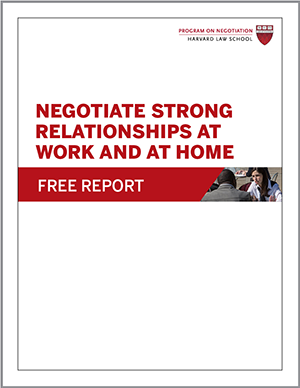
Workplace disputes are inevitable, and dispute resolution strategies are necessary. Employees air grievances, consumers file lawsuits, and strategic partners threaten to fire you and hire your competitor. All too often, such conflicts end up in the courts. In addition to consuming incredible amounts of time and energy, lawsuits often ruin long-standing relationships with suppliers, customers, and shareholders.
Increasingly, organizations are applying the principles of dispute system design (DSD) to resolve internal disputes effectively and at low cost. DSD involves designing and implementing an effective method for resolving the conflicts that flare up within and between organizations. The DSD approach to resolving conflict in organizations follows four steps: diagnosis, design, implementation, and evaluation.
The Influence of a 3rd Party Neutral on Alternative Dispute Resolution (ADR) Processes
Consider a highway construction project involving government agencies and many contractors and subcontractors. Early on, the primary contractor discovers unanticipated soil conditions that will greatly increase his costs and the duration of the project. The contractor demands an order authorizing additional payment to cover the new costs. The government agency in charge of the project rejects the claim, insisting that the contractor should have anticipated the soil conditions when he submitted his initial bid.
In the past, the entire project might have ground to a halt for years as the parties litigated the issue. However, the U.S. construction industry has designed a new DSD-style institution to forestall such conflicts: the Dispute Review Board (DRB). Here’s how it works. At the outset of any large project that could prove contentious, the primary parties set up a DRB comprising three neutral experts. The board meets regularly, sometimes with the parties involved, to learn about possible problems in advance, and receives progress reports and other key documents. The board plays an important preventive role; the conflict will be brought to the DRB only if negotiation fails.
Non-Binding Decisions and Institutional Processes: Bargaining on Precedent
When a dispute is presented to the DRB, its members are likely to be familiar with the situation and capable of making an on-the-spot decision, which the disputants typically agree will be non-binding. Subsequently, any disputant could decide to take the case to court or to binding arbitration. But because of their ongoing relationship with the DRB, the parties are likely to accept and comply with its decisions.
A DRB can be formed for any large-scale joint venture, such as an agreement between an inventor and a manufacturer to develop a new product. More generally, DSD can be applied to manage all your workplace disputes, as long as it’s carefully tailored to suit the individuals, organizations, and situations involved.
What is your favorite dispute resolution strategy? Share how you have handled conflict in the comments.
Related Dispute Resolution Article: The Importance of Power in Negotiations: Taylor Swift and Spotify
Adapted from “Keep It Out of Court: Resolving Differences In-House,” by Frank E.A. Sander (professor, Harvard Law School) and Robert C. Bordone (professor, Harvard Law School), first published in the Negotiation newsletter, July 2005.
Originally published in 2011.





